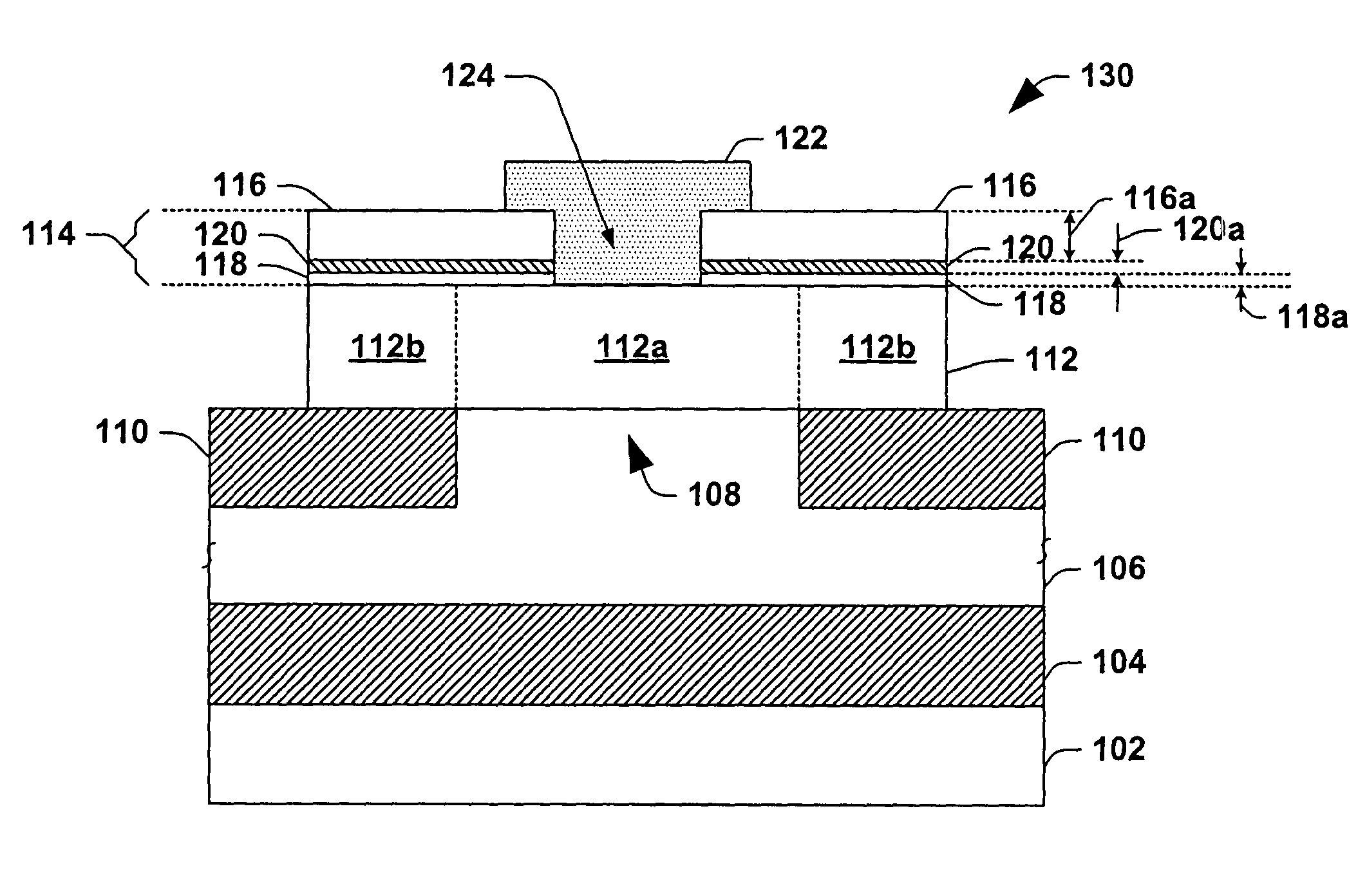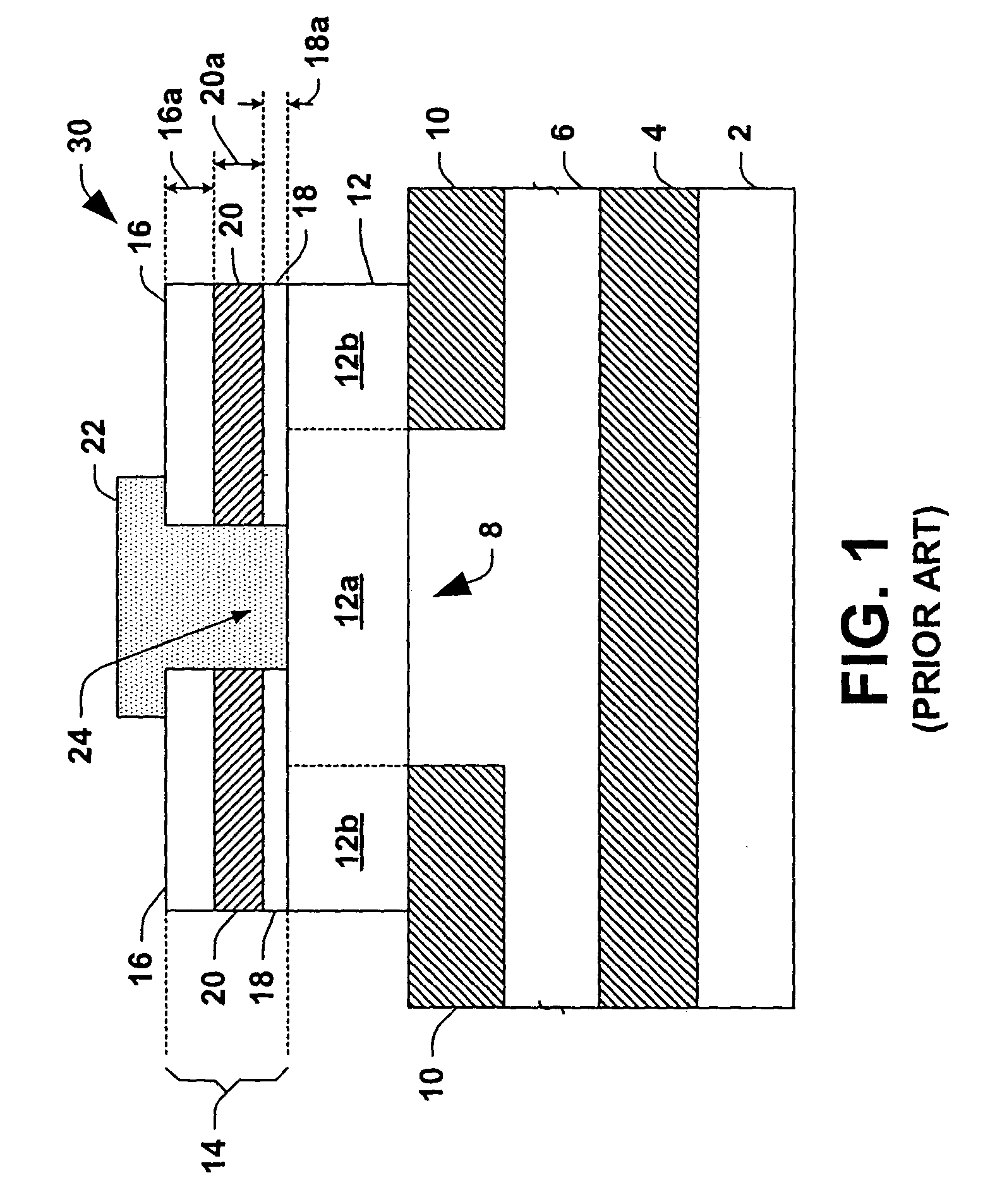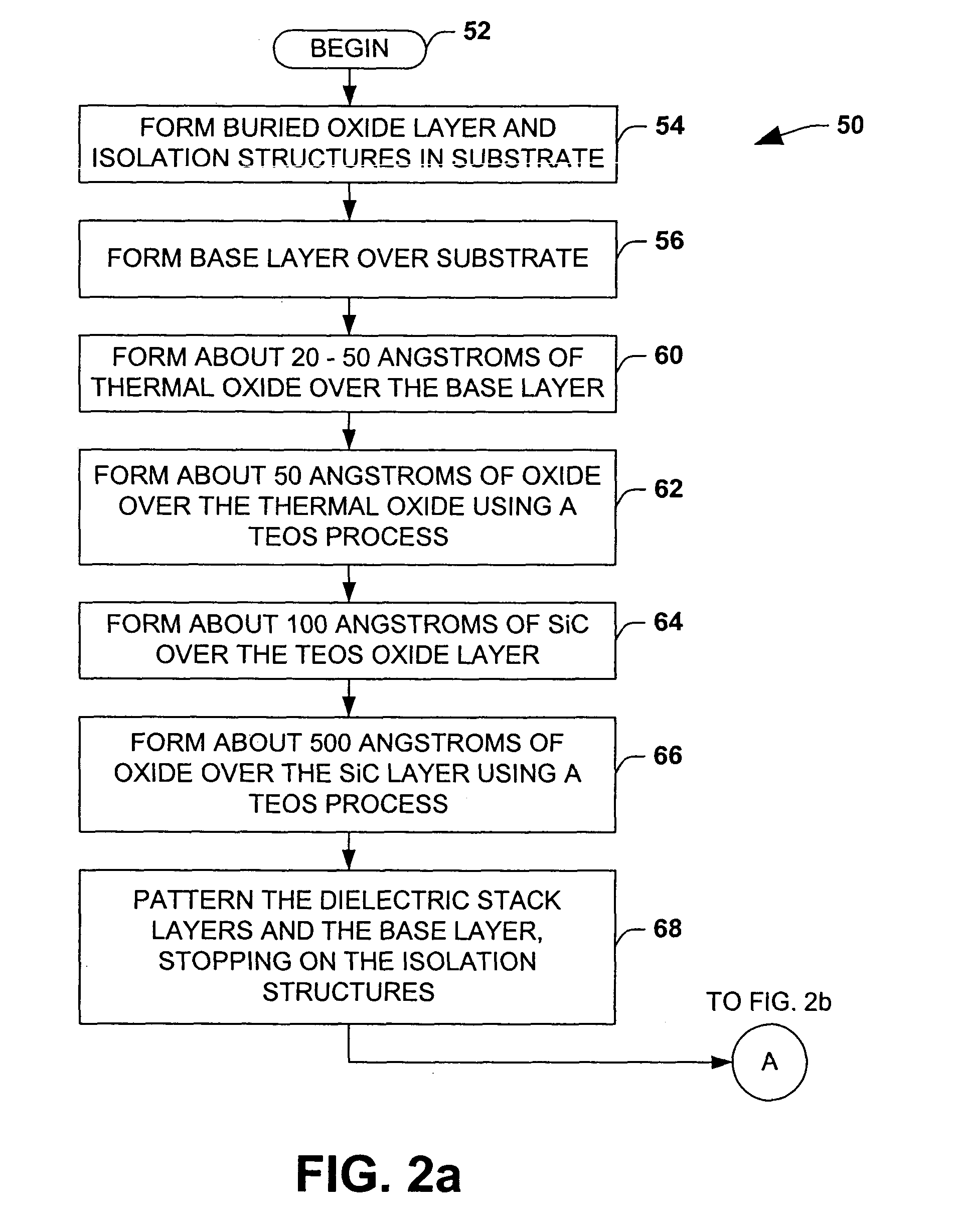Carbide emitter mask etch stop
a carbide emitter and mask technology, applied in the field of semiconductor devices, can solve the problems of poor etch selectivity, diffusion difficulties, and hinder the control of the gain and emitter area of bipolar transistors, so as to improve the control of the beta of the bipolar device, improve the matching capability of the device, and mitigate the isotropic etch effect.
- Summary
- Abstract
- Description
- Claims
- Application Information
AI Technical Summary
Benefits of technology
Problems solved by technology
Method used
Image
Examples
first preferred embodiment
[0040]The present invention addresses these and other problems through use of an amorphous hydrogenated silicon carbide, (a-SiC:H or SiC as an abbreviation) layer in the bipolar emitter-base dielectric stack and appropriate RIE etching in the formation of the emitter-base contact opening. Although illustrated and described below in the context of a particular vertical PNP bipolar transistor architecture, it is to be appreciated that the invention finds application in association with other bipolar designs where polysilicon material is used to form the emitter structure, and that other such applications are deemed as falling within the scope of the present invention and the appended claims. For example, the various aspects of the invention are not limited to bipolar transistors using shallow trench isolation (STI), graded base layer dopant concentrations, buried oxide layers, or the structural dimensions illustrated herein. Moreover, it is noted that the illustrations provided herein...
second preferred embodiment
[0063]In another implementation of the invention, the a-SiC:H layer (e.g., layer 120 of FIGS. 3 and 10-16 above) may be replaced with an a-BC:H layer, or alternatively with any combination of a-SiC:H and a-BC:H. The methodologies of the present invention, such as the above exemplary method 50 of FIGS. 2a and 2b, may be employed to form such a layer, for example, at step 64 of FIG. 2a.
third preferred embodiment
[0064]Alternatively or in combination with the above embodiments and implementations, the upper TEOS oxide layer (e.g., the exemplary layer 116 of FIGS. 3 and 11–16 above) may be removed, wherein the thickness of the carbide layer (e.g. a-SiC:H, or a-BC:H, or combinations thereof, such as layer 120 in the above drawing figures) may be increased to the approximate sum of the original TEOS / carbide thickness.
PUM
| Property | Measurement | Unit |
|---|---|---|
| thickness | aaaaa | aaaaa |
| electron current | aaaaa | aaaaa |
| current | aaaaa | aaaaa |
Abstract
Description
Claims
Application Information
 Login to View More
Login to View More - R&D
- Intellectual Property
- Life Sciences
- Materials
- Tech Scout
- Unparalleled Data Quality
- Higher Quality Content
- 60% Fewer Hallucinations
Browse by: Latest US Patents, China's latest patents, Technical Efficacy Thesaurus, Application Domain, Technology Topic, Popular Technical Reports.
© 2025 PatSnap. All rights reserved.Legal|Privacy policy|Modern Slavery Act Transparency Statement|Sitemap|About US| Contact US: help@patsnap.com



